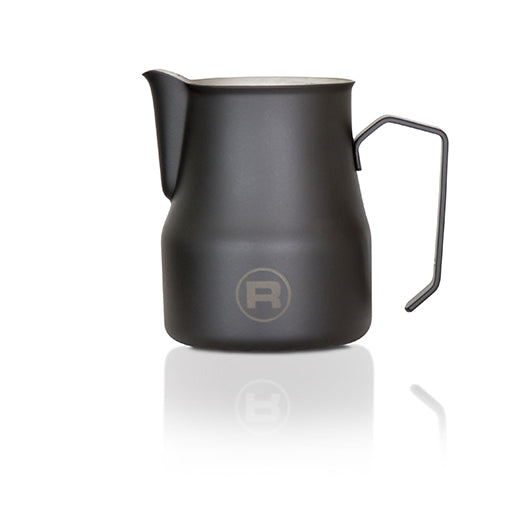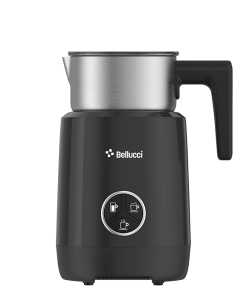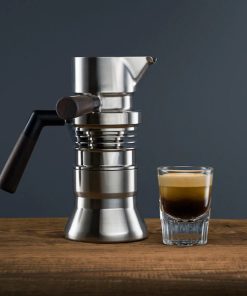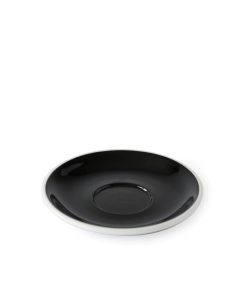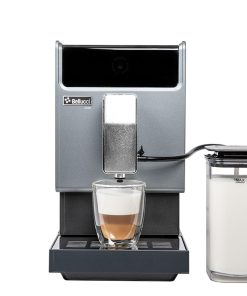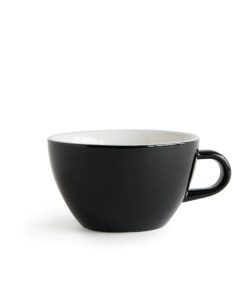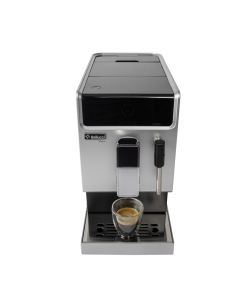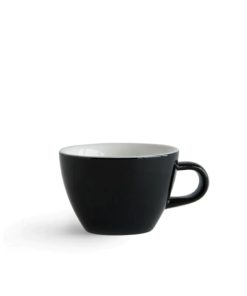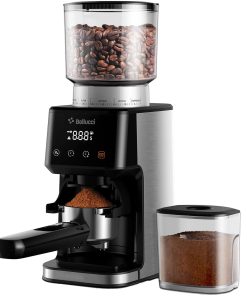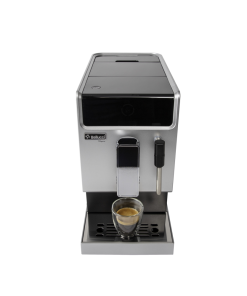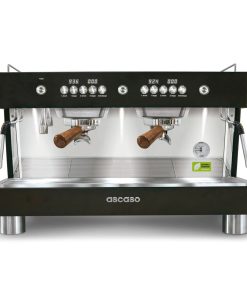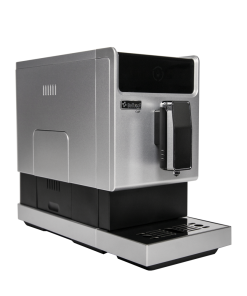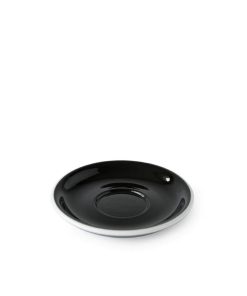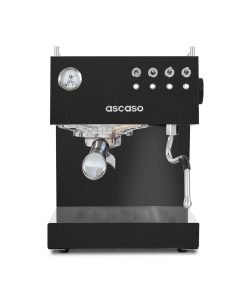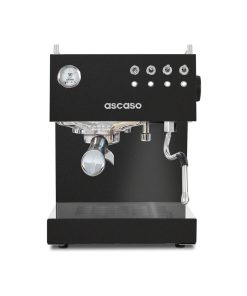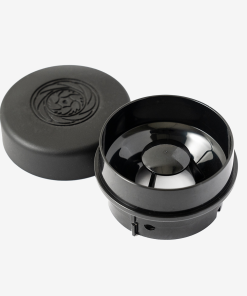Rocket – Milk Pitcher Black Barista -Rocket
$ 58,50 $ 29,25
Rocket Espresso’s pitcher lets you make an unbeatable microfoam every time so you can create stunning latte art.
HISTORY AND ORIGIN
According to our research, latte art (the art of using foamed milk to create designs on a coffee’s crema) first appeared in either Italy or the United States. What we know for certain is that the artform exploded in popularity thanks to David Schomer, owner of Schomer Espresso Vivace in Seattle. He is responsible for creating the Rosetta, one of the most popular latte art designs. Today, techniques are improving, latte art competitions are popping up around the world and the equipment is getting better and better.
Fittingly, the Rocket pitcher was designed to help baristas make the best designs possible. The body of the pitcher is designed to let the milk swirl around when it is heated by the steam wand—important for developing a great texture. The pouring spout is also the perfect shape for creating detailed latte art designs.

HOW TO USE
1. Fill the pitcher with cold milk, about one third of the pitcher’s capacity.

2. Purge the steam wand.

3. Immerse the end of the steam wand into the surface of the milk at a slight angle.
4. Crank the steam wand to its highest setting. The goal here is to make a whirlpool in the milk. We recommend holding the pitcher with both hands to stabilize it and keep the steam wand immersed in the milk.
5. The milk should continue to whirlpool throughout the process. The air being forced into the milk should make a jerky, rapid staccato sound. The louder the noise, the more the milk will foam up (which we do not want).

6. Stop the steam when the milk reaches a temperature of about 140 °F or 60 °C. You should still be able to hold the pitcher without it burning your hand. Remove the steam wand from the pitcher.


| Size | 35 cl, 50 cl |
|---|
Professionally packed and fast shipping
We can offer a variety of shipping options because of our long-term relationship with UPS FedEx DHL. Our warehouse staff is highly skilled and will package your items according to our precise and exact specifications. Your goods will undergo a thorough examination and will be properly packaged prior to being shipped. Everyday, we send to thousands of clients in multiple countries. This is a testament to our determination to become the biggest online retailer in the world. The warehouses are located in Europe as much as they are in USA.
Note: Orders that contain more than one item will be assigned a processing date in accordance with the item.
We will inspect each and every one of the items before sending. Today, the majority orders will be sent within 48 hours. Delivery is expected to take between 3 and seven days.
Returns
The stock is constantly changing. It's not entirely managed by us since we have multiple organizations, such as the factory and our storage. The stock can change at any time. Be aware that your order is out of stock when the order has been placed.
Our policy is valid for 30 days. If 30 days have gone without a trace since the purchase, unfortunately we can't offer an exchange or refund.
In order to be eligible for a refund your item must be in good condition and in the same condition that you received it. It should also be returned in the original packaging.
Related products
Uncategorized
Bellucci – Latte Pro – Induction milk frother hot/cold and hot chocolate maker Belluci – Saeco
Uncategorized
Uncategorized
Uncategorized
Uncategorized
Uncategorized
Uncategorized
Uncategorized
Uncategorized
Uncategorized
Uncategorized
Uncategorized
Uncategorized
Uncategorized
Uncategorized
Uncategorized
Uncategorized
Uncategorized
Uncategorized
Uncategorized
Uncategorized
Uncategorized
Uncategorized
Uncategorized
Uncategorized
